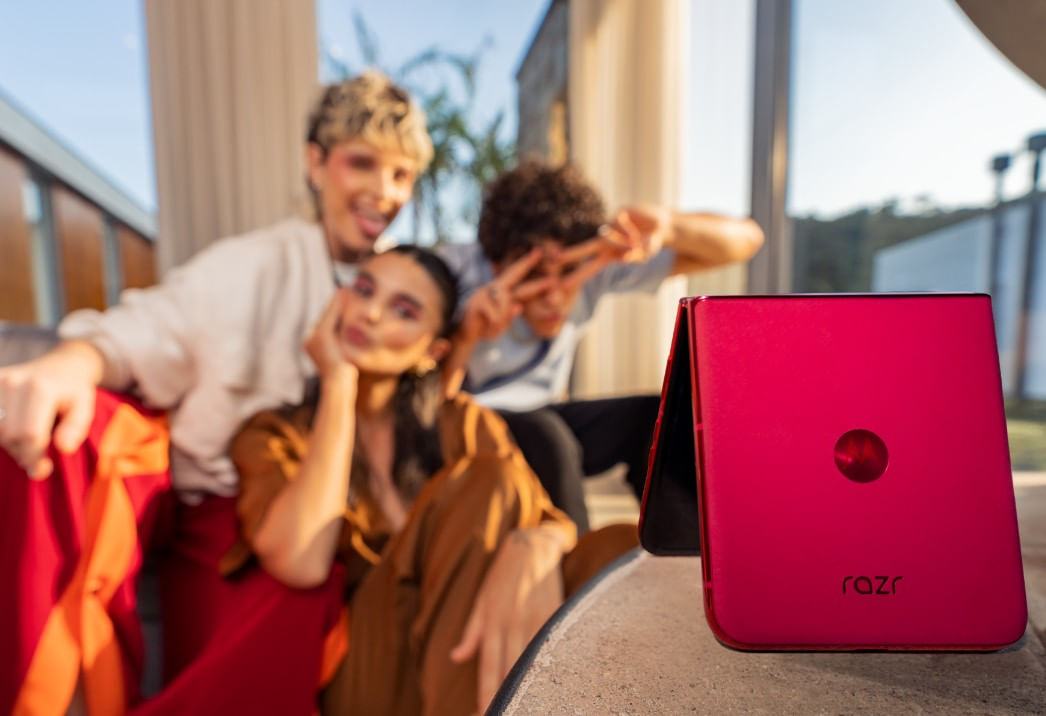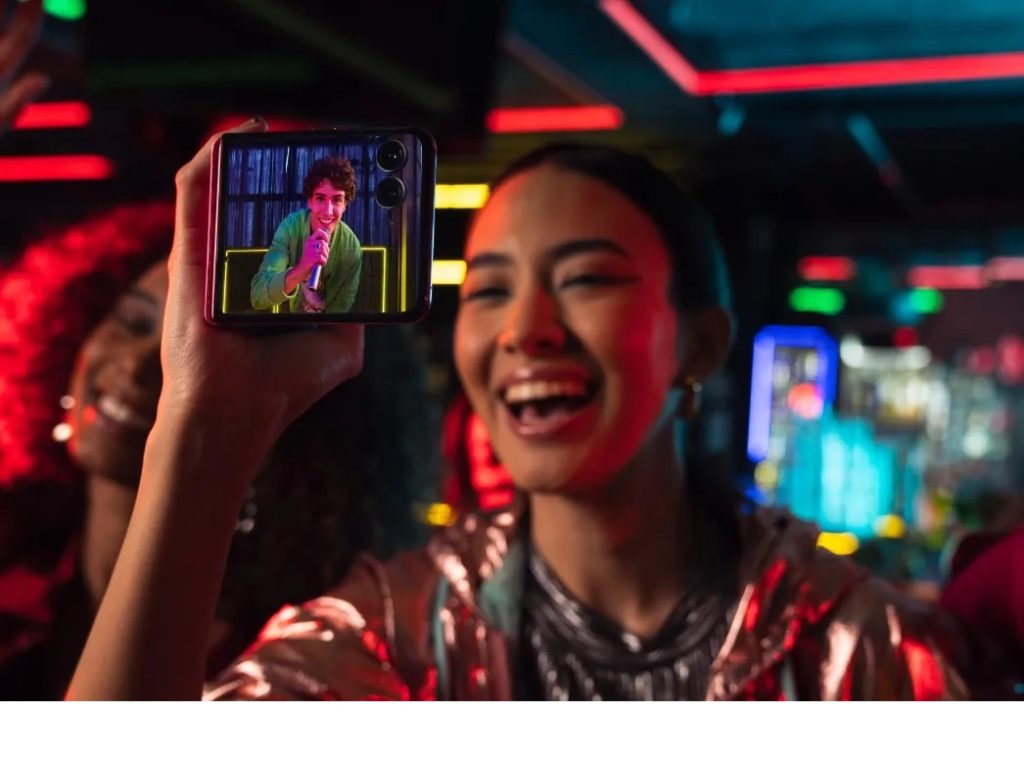When foldable phones were introduced to the masses in 2020, many Millennials like myself immediately became nostalgic about THE clamshell phone back in the early 2000s: The Motorola Razr V3. So it’s fitting that Motorola brought the Razr name back for its foldable phone release. After a few years and four iterations, the Motorola Razr 50 Ultra is the culmination of what Motorola learned in the five years since they launched the foldable phone in the modern era, and they have definitely been learning…
Out of the box, the Motorola Razr 50 Ultra comes with the device, warranty/literature, charging cable, and the SIM eject tool as standard. But seldom seen in the top brands’ phones, Motorola has also packed a 68W adapter that can recharge fully in under an hour and a protective case set, giving you everything you need for your phone – a fruit-named brand would certainly charge you an arm and a leg for the case, let alone the 68W adapter.
(On another note, it turns out that Motorola sprays a woody fragrance into the packaging on the inside, further enhancing your unboxing experience with the sense of smell – a neat touch on their part.)

The case certainly came in handy, because while the front is glass with an aluminium frame, the back is covered in faux leather, and while it looked fashionable (akin to a leather wallet or bag), it was a dust magnet. Within ten minutes of using it, I had to put the case on to minimise further dust-gathering. The only exposed parts were the external screen at the front and the power button/fingerprint sensor on the right hand side of the device. (The case set had small amounts of tape on the inside to ensure it stuck to the phone without being impossible to remove, since the two cases had exposed ends to support hinge functionality – another neat little touch that Motorola thought of.)

At 187 grams, the Razr 50 Ultra feels reasonably comfortable without being too weighty: the Samsung Galaxy 24+ and the iPhone 16 Pro, as a comparison, are about 10 grams heavier, with smaller screens to boot. The aluminium frame looks very clean, and the bezels surrounding both the external and the internal screens are small, maximising the screen real estate. The phone boasts a large four inch external screen and a 6.9 inch internal screen. The combined screen sizes are the largest on the market for foldable phones, and while they don’t necessarily make the most of the external space, especially the area around the camera lens (more on that later), it does make a great canvas for some comical wallpapers:

Source: Slashgear
The hinge, which seems to be a problem point with most foldable phones, looks absolutely seamless: when closed, the top and bottom halves of the phone sit flush against the hinge, and when opened, the hinge disappears underneath, leaving a fine seam across the middle of the phone. The only time there is a gap is when the phone is at a 45 degree angle, and even then it’s a gap that is 0.2 mm at best, and I could see brushes on the edge to further prevent dust from entering. Having a hinge is usually a red flag for water protection, which makes the Razr 50 Ultra’s IPX8 rating even more impressive.

Opening the phone, you are greeted with an internal 6.9 inch OLED screen, at 1080 x 2640 pixels, and displays at 413 ppi. I found the internal display to be clean, with just the aluminium frame surrounding it and a single punch hole camera visible on the screen. Of course, the main concern with the Razr 50 Ultra’s internal screen is the crease: Will it look and feel noticeable? Amazingly, the Razr 50 Ultra’s screen at the crease is barely noticeable, with a 9mm indented curve intersecting the middle of the screen, and due to the hinge design, it has very minimal depth so there isn’t a definitive “line” that cuts across the screen (save for two small bumps on the aluminium frame), nor could I feel the crease. While the fold is fairly obvious when the screen is off, using the internal screen when lit makes the crease almost invisible. Within minutes of setting up the phone, I had forgotten that it had a crease, in terms of visibility and tactility.

The weight of the phone is distributed quite evenly between the top and the bottom half, so there’s no feeling of imbalance when holding it. The Razr 50 Ultra does have quite a large screen though and I don’t have the biggest mitts, so I became accustomed to using the internal screen with two hands. But thank goodness Motorola 50 Ultra made a large external display.
The reason I’m thankful is because the 4-inch external display ended up being my main screen: With Android 14 and features implemented by the Hello UI, the external display became a miniaturised version of a (nearly) fully functional phone. I could answer messages, check my email, control music, watch videos, and even play games on the external screen. Granted, the lack of a display real estate makes the last two tasks extremely tricky, but what Motorola has done to allow functionality right out of the box has been a godsend – no GoodLock app needed.
The two main cameras (2x 50MP cameras: one wide and one telephoto) also sit right on the external display, meaning I can stroke my ego (if I wanted to) by taking selfies with the best cameras on board. They perform exceptionally well, from daylight to artificial lighting to lowlight/night shooting. When opened, the external display doubles as a preview screen for the photo subject to see as well. My only gripe with this setup is that the lenses sit right above the display, as there’s no dedicated cutout, and the lenses are individually cast, meaning the display just under the lenses and the area surrounding the lenses are basically nonfunctional, save for a wallpaper, and the gap between the two lenses was a dust trap, requiring multiple cleans throughout my time with the device.

With a Snapdragon 8s Gen 3 chipset on board, the Motorola Razr 50 Ultra runs resource-intensive applications with ease, with very little to no throttling noticed. Furthermore, I never really felt the phone overheat, so it manages heat surprisingly well, given this is a concern with smaller form factor foldable phones. While the battery seems on the smaller side in comparison with contemporaries at 4000 mAh, I was recharging it every two days or so, so it wasn’t very noticeable that it came with a smaller battery.
The Motorola Razr 50 Ultra runs on Android 14 with Gemini AI, with the Hello UI handling the customisation. I’ve used the Hello UI before on the Motorola Edge 50 Fusion, and it has largely remained unchanged: It is quite a basic UI with very little quality-of-life additions, other than the ability to customise wallpapers using AI. Personally, I would like to see Motorola work on their software for future releases to be more discernible amongst other companies’ UIs so it doesn’t look like a skinned Android OS. There was very little to criticise about the Motorola Razr 50 Ultra, but the UI was the one big feature that takes it down a notch.

Summary:
Motorola has been on a tear lately, and their flagship model, the Razr line, has been doing a lot of the heavy lifting. The newest release, the Razr 50 Ultra, improves upon its predecessor, the Razr 40 Ultra, by implementing better design decisions, better cameras, and upgraded hardware. Small quality-of-life upgrades straight out of the box, a fantastic design and feel, the largest external screen on the market, running on one of the top processors in the market today, and under $2000 to boot. With the Hello UI the only aspect that prevents this phone from being the pinnacle of clamshell foldable phones, the Motorola Razr 50 Ultra will likely be my favourite mobile phone of 2024 and well on its way to bringing Motorola back to their heydays of the early 2000s.

